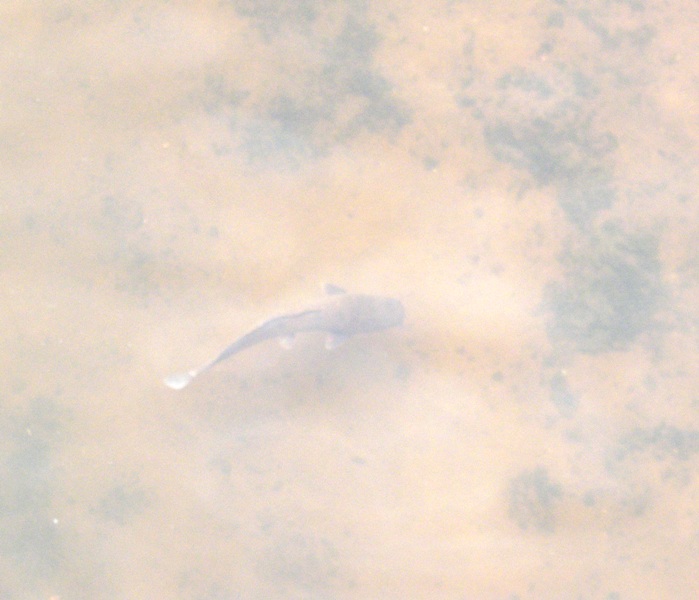Although I am presently happy that over here springtime is stil in full swing and autumn far away
The Fat and the Furious 7 - Dimwits Letaba 2013
Re: The Fat and the Furious 7 - Dimwits Letaba 2013
Love the colourful mopane leaves on the ground 
Although I am presently happy that over here springtime is stil in full swing and autumn far away
Although I am presently happy that over here springtime is stil in full swing and autumn far away
PuMbAa
Please visit our website: www.photomaniacs.de
Please visit our website: www.photomaniacs.de
- Richprins
- Committee Member
- Posts: 75269
- Joined: Sat May 19, 2012 3:52 pm
- Location: NELSPRUIT
- Contact:
Re: The Fat and the Furious 7 - Dimwits Letaba 2013
Thanks, Pumbaa!
It was a different sort of day...not just because the terrifying heat had gone, but also because we had nowhere to go, really...Accommodation was sorted, no pressure!
And also less Dimwits, especially the hamsterish ones like Goldenboy and Destroyer. Also no leachy prowling about!
That is actually how it should be, meandering about without a clue!
We stopped on the Letaba High Bridge for quite a while, and I did what I loved...checking out fish!
My eagle eye spotted this depression through the clear water..a kurper or tilapia breeding hole, IMO?

They make these things and hang around there while mouth-brooding...quite an unusual fish thing!
Reproduction
In the first step in the reproductive cycle for Mozambique tilapia, males excavate a nest into which a female can lay her eggs. After the eggs are laid, the male fertilizes them. Then the female stores the eggs in her mouth until the fry hatch; this act is called mouthbrooding. One of the main reasons behind the aggressive actions of Mozambique tilapias is access to reproductive mates. The designation of Mozambique tilapias as an invasive species rests on their life-history traits: Tilapias exhibit high levels of parental care as well as the capacity to spawn multiple broods through an extended reproductive season, both contributing to their success in varying environments. In the lek system, males congregate and display themselves to attract females for matings. Thus, mating success is highly skewed towards dominant males, who tend to be larger, more aggressive, and more effective at defending territories. Dominant males also build larger nests for the spawn. During courtship rituals, acoustic communication is widely used by the males to attract females. Studies have shown that females are attracted to dominant males who produce lower peak frequencies as well as higher pulse rates. At the end of mating, males guard the nest while females take both the eggs and the sperm into their mouth. Due to this, Mozambique tilapias can occupy many niches during spawning since the young can be transported in the mouth. These proficient reproductive strategies may be the cause behind their invasive tendencies.
Male Mozambique tilapias synchronize breeding behavior in terms of courtship activity and territoriality in order to take advantage of female spawning synchrony. One of the costs associated with this synchronization is the increase in competition among males, which are already high on the dominance hierarchy. As a result, different mating tactics have evolved in these species. Males may mimic females and sneak reproduction attempts when the dominant male is occupied. Likewise, another strategy for males is to exist as a floater, travelling between territories in an attempt to find a mate. Nevertheless, it is the dominant males who have the greatest reproductive advantage.
http://en.wikipedia.org/wiki/Mozambique_tilapia
More nests!

Mam: "Oooh...look! An elephant footprint in the middle of nowhere!"
Frew: ""I wonder how it got there?"
RP: "No, It is a fish nest!"
Mam: "Ah! Thanks, RP!"
Frew: "Thanks, old chap! "
"

And then a predator! The infamous Great Brown....rarely seen in the Letaba!
The infamous Great Brown....rarely seen in the Letaba! 

Just a barbel, but a big one!
PS:
This is how the conversation would have gone had the others been there:
Frew: "Thanks for that, RP!"
Goldenboy: "Can we PLEASE go now!? There must be lion around the corner! "
"
Borderline: "You are talking rubbish! That is the old nest of a saddle-billed stork! "
"
leachy: "Get in, I'm leaving with or without you. Too slow. Bye."
Destroyer: "Buurp! Oh, shorry, I'll put that pieshe of railing back!

It was a different sort of day...not just because the terrifying heat had gone, but also because we had nowhere to go, really...Accommodation was sorted, no pressure!
And also less Dimwits, especially the hamsterish ones like Goldenboy and Destroyer. Also no leachy prowling about!
That is actually how it should be, meandering about without a clue!
We stopped on the Letaba High Bridge for quite a while, and I did what I loved...checking out fish!
My eagle eye spotted this depression through the clear water..a kurper or tilapia breeding hole, IMO?

They make these things and hang around there while mouth-brooding...quite an unusual fish thing!
Reproduction
In the first step in the reproductive cycle for Mozambique tilapia, males excavate a nest into which a female can lay her eggs. After the eggs are laid, the male fertilizes them. Then the female stores the eggs in her mouth until the fry hatch; this act is called mouthbrooding. One of the main reasons behind the aggressive actions of Mozambique tilapias is access to reproductive mates. The designation of Mozambique tilapias as an invasive species rests on their life-history traits: Tilapias exhibit high levels of parental care as well as the capacity to spawn multiple broods through an extended reproductive season, both contributing to their success in varying environments. In the lek system, males congregate and display themselves to attract females for matings. Thus, mating success is highly skewed towards dominant males, who tend to be larger, more aggressive, and more effective at defending territories. Dominant males also build larger nests for the spawn. During courtship rituals, acoustic communication is widely used by the males to attract females. Studies have shown that females are attracted to dominant males who produce lower peak frequencies as well as higher pulse rates. At the end of mating, males guard the nest while females take both the eggs and the sperm into their mouth. Due to this, Mozambique tilapias can occupy many niches during spawning since the young can be transported in the mouth. These proficient reproductive strategies may be the cause behind their invasive tendencies.
Male Mozambique tilapias synchronize breeding behavior in terms of courtship activity and territoriality in order to take advantage of female spawning synchrony. One of the costs associated with this synchronization is the increase in competition among males, which are already high on the dominance hierarchy. As a result, different mating tactics have evolved in these species. Males may mimic females and sneak reproduction attempts when the dominant male is occupied. Likewise, another strategy for males is to exist as a floater, travelling between territories in an attempt to find a mate. Nevertheless, it is the dominant males who have the greatest reproductive advantage.
http://en.wikipedia.org/wiki/Mozambique_tilapia
More nests!

Mam: "Oooh...look! An elephant footprint in the middle of nowhere!"
Frew: ""I wonder how it got there?"
RP: "No, It is a fish nest!"
Mam: "Ah! Thanks, RP!"
Frew: "Thanks, old chap!

And then a predator!

Just a barbel, but a big one!
PS:
This is how the conversation would have gone had the others been there:
Frew: "Thanks for that, RP!"
Goldenboy: "Can we PLEASE go now!? There must be lion around the corner!
Borderline: "You are talking rubbish! That is the old nest of a saddle-billed stork!
leachy: "Get in, I'm leaving with or without you. Too slow. Bye."
Destroyer: "Buurp! Oh, shorry, I'll put that pieshe of railing back!
Please check Needs Attention pre-booking: https://africawild-forum.com/viewtopic.php?f=322&t=596
Re: The Fat and the Furious 7 - Dimwits Letaba 2013
I wonder what exactly courtship and display look like 
- Richprins
- Committee Member
- Posts: 75269
- Joined: Sat May 19, 2012 3:52 pm
- Location: NELSPRUIT
- Contact:
Re: The Fat and the Furious 7 - Dimwits Letaba 2013
Presumably they wait for clear water in winter like this! 
Please check Needs Attention pre-booking: https://africawild-forum.com/viewtopic.php?f=322&t=596
- Richprins
- Committee Member
- Posts: 75269
- Joined: Sat May 19, 2012 3:52 pm
- Location: NELSPRUIT
- Contact:
Re: The Fat and the Furious 7 - Dimwits Letaba 2013
Ja, Flutts...have to provide proof! 
Please check Needs Attention pre-booking: https://africawild-forum.com/viewtopic.php?f=322&t=596
Re: The Fat and the Furious 7 - Dimwits Letaba 2013
Lost without the pressure and no hamsters in attendance 

Tilapia “nests” One can catch them by casting a hook into the nest and the tilapia picks the hook up to throw it out
One can catch them by casting a hook into the nest and the tilapia picks the hook up to throw it out 

Tilapia “nests”
- Flutterby
- Posts: 44029
- Joined: Sat May 19, 2012 12:28 pm
- Country: South Africa
- Location: Gauteng, South Africa
- Contact:
Re: The Fat and the Furious 7 - Dimwits Letaba 2013
I saw a car yesterday that had "Hamster" on the registration plate...wasn't you by any chance BC?Bushcraft wrote:Lost without the pressure and no hamsters in attendance

- Richprins
- Committee Member
- Posts: 75269
- Joined: Sat May 19, 2012 3:52 pm
- Location: NELSPRUIT
- Contact:
Re: The Fat and the Furious 7 - Dimwits Letaba 2013
Loadshedding, so here we go...
A scenic shot of the river!

And on a whim, we went to Alf's spot....Makhadzi Picnic site! Never been there, and we could eat if we so wished? The entire vehicle was packed and ready for action, as per day 1!
On the way, a giant buff named by 100ponder...


A dry pan, approaching the site....!

And some beasts!

Makhadzi!

Note the blissful cool weather!
Frew: "Are you sure this cool weather will last today?"
RP: "Of course! It is like this every year...the worst is over!"
Please check Needs Attention pre-booking: https://africawild-forum.com/viewtopic.php?f=322&t=596
- Alf
- Posts: 10705
- Joined: Wed Nov 26, 2014 12:40 pm
- Country: south africa
- Location: centurion
- Contact:
Re: The Fat and the Furious 7 - Dimwits Letaba 2013
So overcrowded again 
Wish i could have seen it like this during December
Wish i could have seen it like this during December
Next trip to the bush??
Let me think......................
Let me think......................


